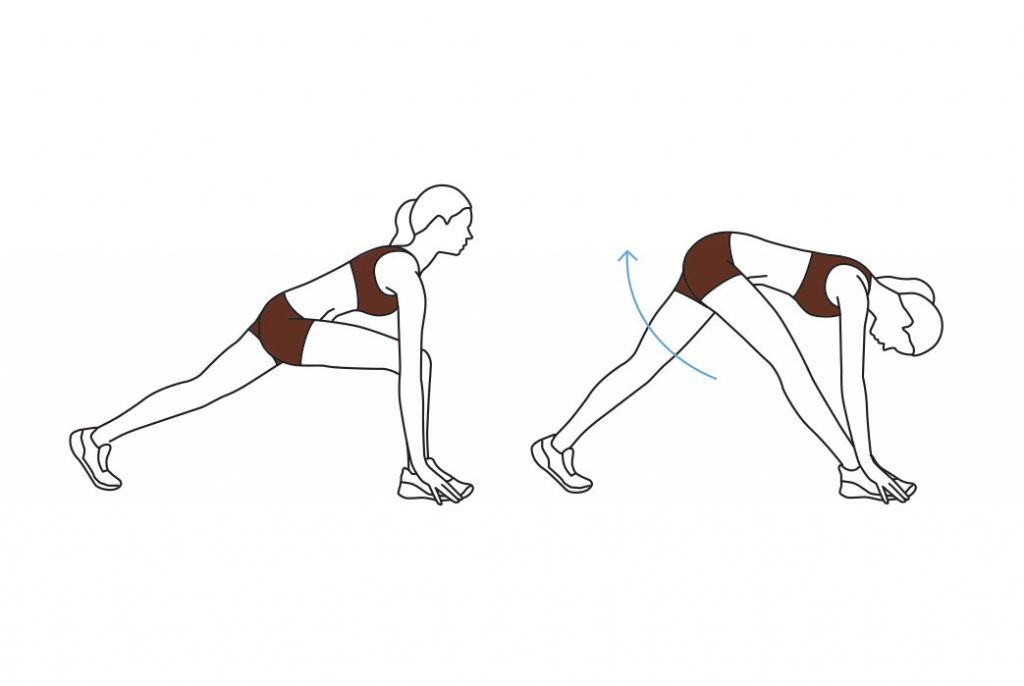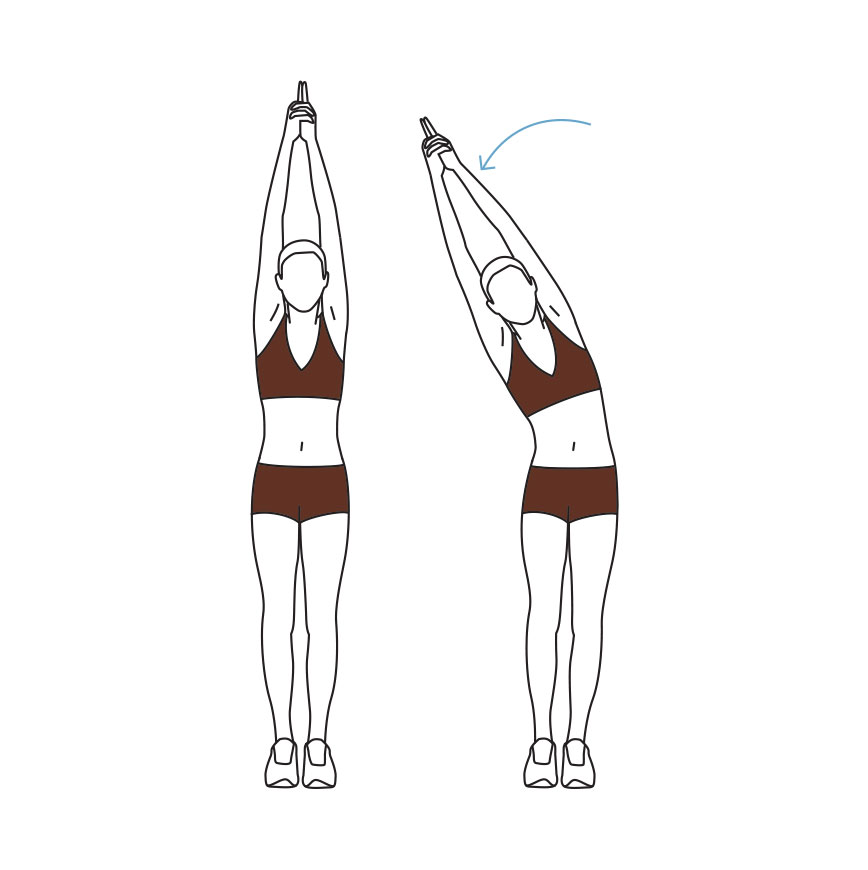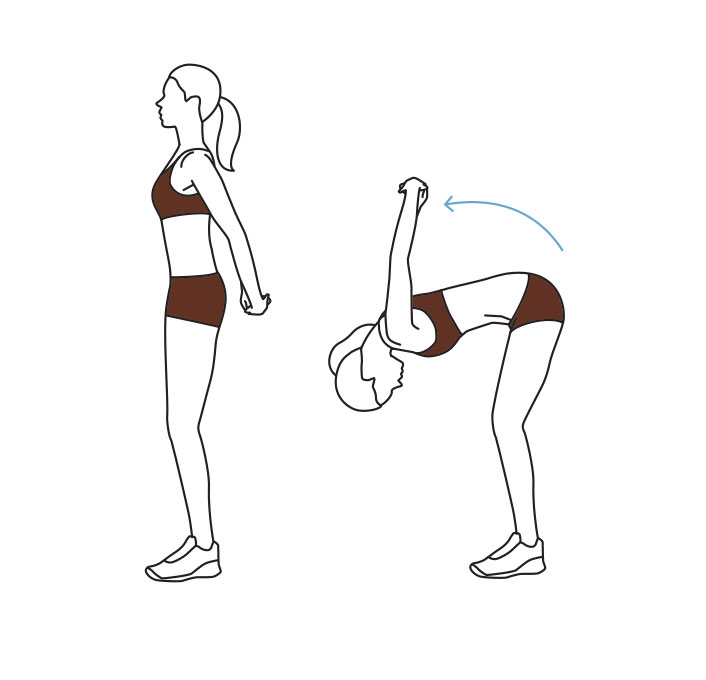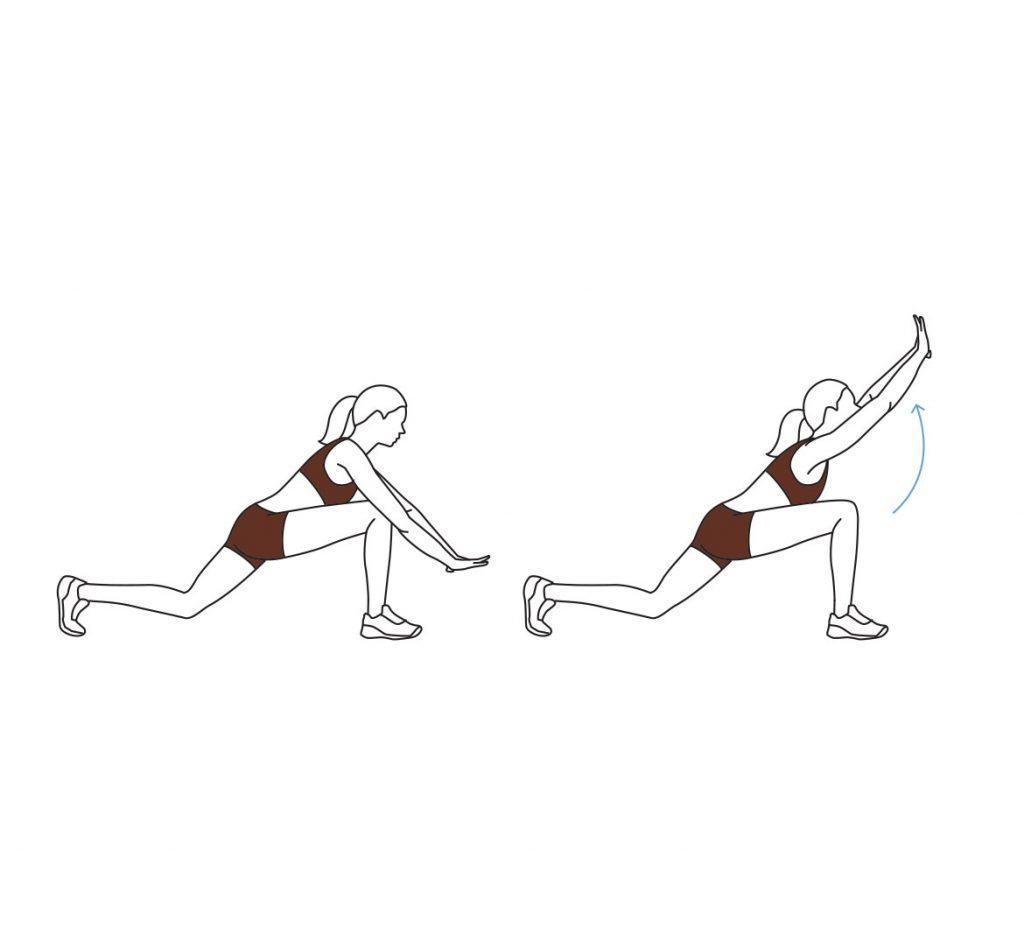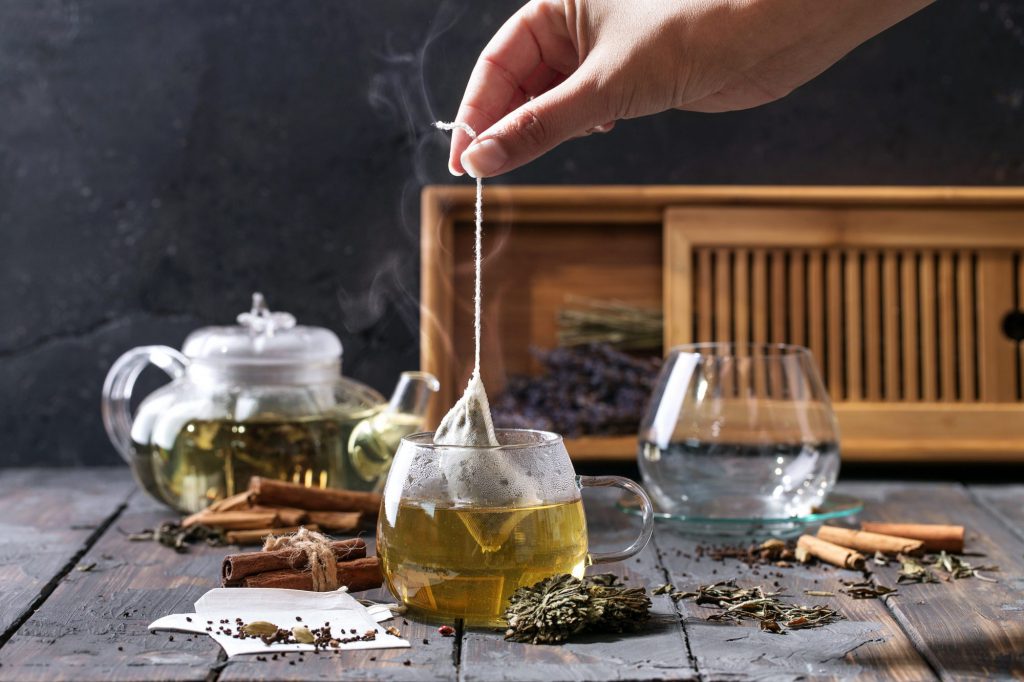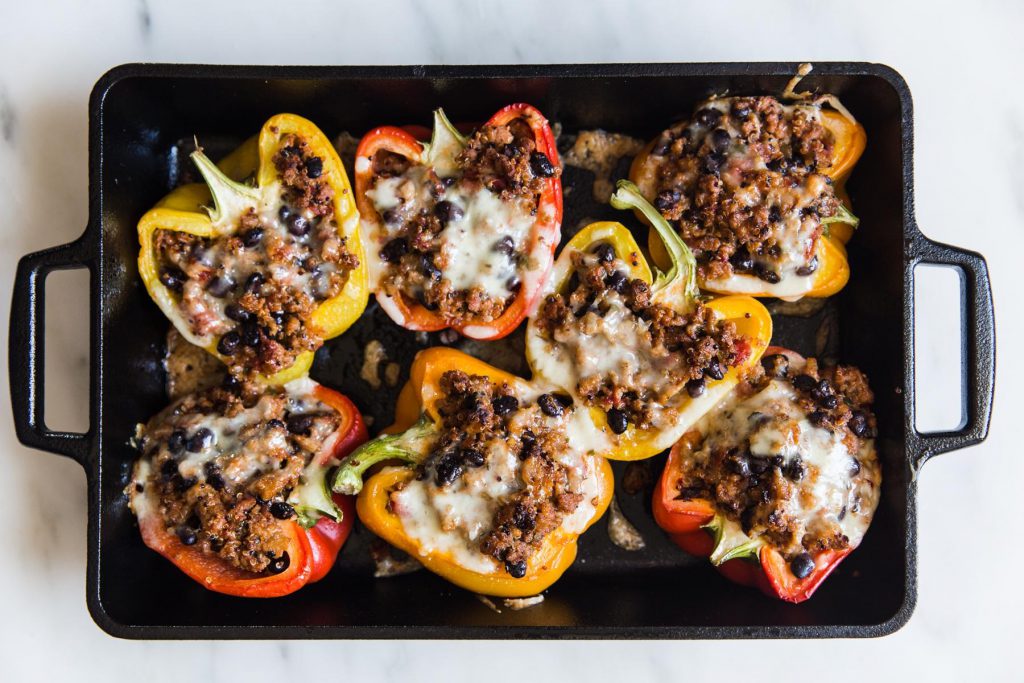
Live Positive! Newsletter – September 2020 Edition
After a life-altering event, negative thoughts can be debilitating and keep you from moving forward. The idea of achieving a healthy balance and discovering a new set of goals to attain can seem like an impossible dream. However, despite not being able to change the past, you do have the power to take control over how you move forward. If you are ready to embark on a journey of healing and self-exploration, this month’s newsletter and my upcoming courses will help you realize you have the inner strength and drive to overcome the most challenging of times as you devise and conquer each manageable goal one-step-at-a-time. You can do this!
In This Issue
- Article of the Month
- Mindset
- Fitness
- Nutrition
- Recipe of the Month
- You’re Invited!
Article of the Month
Focus on The Positives During Challenging Times
When unexpected life-altering events occur, it can be a challenging time for all involved emotionally, mentally, spiritually, socially, financially, and even physically. The good news is there is a way to lessen the damaging effect of such hardships. Reduce the negative impact on your health, relationships, current responsibilities, and future goals with the power of positive thinking and a winning mindset.
– Read the full article.
MINDSET
Using Lessons From Challenging Times to Do More!
Have you been through an event that shook you to the core of who you are and what you dreamed of achieving? Do you feel trapped in an unending cycle of pain, regret, fear, and self-doubt? Such a cycle can be devastating to your mental, emotional, social, and physical health. But, although all avenues to a more fulfilling path may appear closed, this is an illusion. In reality, such opportunities are all around you. All you need are the right tools to break through the barriers that are preventing you from moving forward in a more positive direction.
If you are reliving the same painful experience each day and your next step forward remains unclear, then it is time to give your subconscious a reboot.
You are in Control of Your Way Forward
No one can predict when and how hardships and setbacks will occur. The good news is you do not have to let them back you into a corner when they happen. With the right mindset, you will be able to use the lessons learned during the rocky times in life to find your way through to a place filled with confidence, direction, and achievement.
Are You Ready to Find Your Next Step?
If the answer is a resounding “Yes!”, you have already taken the first step to realizing how strong and amazing you are.
With my Keys to a Champion Mindset course in October and Group Breakthrough course in November, I will show you what thousands of others have already learned about how hardships and setbacks also bring opportunities for growth and positive change.
Join me as I discuss what elite athletes, successful entrepreneurs, and happy people everywhere are doing that will positively impact your life in a way you never dreamed! This is what you have been waiting to hear. This is where you break out of that never-ending cycle and into a place of unrealized potential. Visit my website today, and sign up to come on this journey with me!
FITNESS
6 Stretching Exercises to Help Your Whole Body Loosen Up by Sharon Liao at REALSIMPLE
Image Credits: Getty Images and Jason Lee
The Stretching Routine
When you can barely squeeze a workout into your day, taking time to focus on flexibility may feel like, well, a stretch. But stretching is an important part of fitness: It can improve your range of motion, increase circulation, and calm your mind—which may help fend off injuries and illness, as well as bring on a better night’s sleep.
To limber up, try the following quick head-to-toe routine created by Dana Slamp, a senior yoga instructor at Pure Yoga, in New York City. Do the complete series once daily. Deepen each stretch with every exhalation, and stop if you feel any strain or pain.
MOVE 1: The Runner’s Stretch SETS: 4 switching sides
(A) Step your right foot forward and lower into a lunge, placing your fingertips on the floor or on two firm cushions if your hands don’t reach.
(B) Breathe in, then, in one motion, exhale as you straighten your right leg. Slowly return to the lunge position.
MOVE 2: Isometric Downward Dog
(A) Stand with your feet together and your arms straight overhead. Clasp your hands together, with your fingers interlaced and pointer fingers extended. Inhale as you reach upward.
(B) Breathe out as you bend your upper body to the right. Take five slow breaths. Slowly return to the center. Repeat on the left side.
MOVE 3: The Forward Hang
Stand with your feet hip-distance apart and your knees slightly bent.
(A) Interlace your fingers behind your back. (If your hands don’t touch, hold on to a dish towel.) Breathe in and straighten your arms to expand your chest.
(B) Exhale and bend at your waist, letting your hands stretch toward your head. Hold for five deep breaths.
MOVE 4: The Low Lunge Arch
Step your right foot forward into a lunge and lower your left knee onto the floor or a folded towel or blanket.
(A) Bring your arms in front of your right leg and hook your thumbs together, palms facing the floor.
(B) Breathe in as you sweep your arms overhead, stretching as far back as is comfortable. Take five deep breaths. Switch sides.
MOVE 5: The Seated Back Twist
Sit on the floor with your legs straight.
(A) Bend your right knee and step your right foot over your left leg. Put your right hand on the floor, fingers pointing outward, for support. Bend your left elbow and turn to the right, placing the back of your arm against your right knee. Inhale as you sit tall.
(B) Breathe out as you twist, pressing your arm into your leg and looking over your right shoulder. Hold for five breaths, then slowly return to the center. Switch sides.
MOVE 6: The Bound Angle
Sit on the floor with your legs straight.
(A) Bend your knees and bring the soles of your feet together, letting your knees drop toward the ground. Hold your shins as you inhale and stretch your chest upward.
(B) Exhale as you hinge forward from your hips (without rounding your back) and place your palms on the ground. Hold for five slow breaths.
NUTRITION
20 Stress Reliever Foods to Try if You’re Feeling Anxious by Lindsay Funston and Christina Ochler at Nutrition
Images by Getty Images
Skip the chips and fill up on these anxiety-reducing foods.
When work deadlines begin piling up and your social calendar is overbooked, who has time for healthy eating? But when it comes to combating stress levels, what you eat may actually help relieve your tension. Some foods may help stabilize blood sugar or, better yet, your emotional response. Here are 20 foods that may reduce stress and why they can help.
1) Green Leafy Vegetables
It’s tempting to reach for a cheeseburger when stressed, but go green at lunch instead. “Green leafy vegetables like spinach contain folate, which produces dopamine, a pleasure-inducing brain chemical, helping you keep calm,” Heather Mangieri, RDN, a spokesperson for the Academy of Nutrition and Dietetics, tells Health. A study in the Journal of Affective Disorders of 2,800 middle-age and elderly people found that those who consumed the most folate had a lower risk of depression symptoms than those who took in the least. Another study from the University of Otago in New Zealand discovered that college students tended to feel calmer, happier, and more energetic on days they ate more fruits and veggies. It can be hard to tell which came first—upbeat thoughts or healthy eating—but the researchers found that healthy eating seemed to predict a positive mood the next day.
2) Turkey Breast
You’ve probably heard that the tryptophan in turkey is to blame for that food coma on Thanksgiving. This amino acid helps produce serotonin, “the chemical that regulates hunger and feelings of happiness and well-being,” Mangieri says. On its own, tryptophan may have a calming effect. In a 2006 study published in the Journal of Psychiatry Neuroscience, men and women who were argumentative (based on personality tests) took either tryptophan supplements or a placebo for 15 days. Those who took tryptophan were perceived as more agreeable by their study partners at the end of the two weeks compared with when they didn’t take it. Other foods high in tryptophan include nuts, seeds, tofu, fish, lentils, oats, beans, and eggs.
3) Oatmeal
If you’re already a carb lover, it’s likely that nothing can come between you and a doughnut when stress hits. First rule of thumb: Don’t completely deny the craving. According to research from the Massachusetts Institute of Technology, carbohydrates can help the brain make serotonin, the same brain chemical that is regulated by certain antidepressants. But instead of reaching for that sugary bear claw, go for complex carbs. “Stress can cause your blood sugar to rise, Mangieri says, “so a complex carb like oatmeal won’t contribute to your already potential spike in blood glucose.”
4) Yogurt
As bizarre as it may sound, the bacteria in your gut might be contributing to stress. Research has shown that the brain and gut communicate via body chemicals, which is why stress can inflame gastrointestinal symptoms. And a UCLA study among 36 healthy women revealed that consuming probiotics in yogurt reduced brain activity in areas that handle emotion, including stress. This study was small, so more research is needed to confirm the results—but considering that yogurt is full of calcium and protein in addition to probiotics, you really can’t go wrong by adding more of it to your diet.
5) Salmon
Stress can ratchet up levels of anxiety hormones, such as adrenaline and cortisol. “The omega-3 fatty acids in salmon have anti-inflammatory properties that may help counteract the negative effects of stress hormones,” says Lisa Cimperman, RD, of the University Hospitals Case Medical Center and a spokesperson for the Academy of Nutrition and Dietetics. In a study funded by the National Institutes of Health, Oregon State University medical students who took omega-3 supplements had a 20% reduction in anxiety compared to the group given placebo pills.
6) Blueberries
“When you’re stressed, there’s a battle being fought inside you,” Mangieri says. “The antioxidants and phytonutrients found in berries fight in your defense, helping improve your body’s response to stress.” Research has also shown that blueberry eaters experience a boost in natural killer cells, “a type of white blood cell that plays a vital role in immunity, critical for countering stress,” Cynthia Sass, MPH, RD, Health’s contributing nutrition editor, tells Health.
7) Pistachios
When you have an ongoing loop of negative thoughts playing in your mind, doing something repetitive with your hands may help silence your inner monologue. Think knitting or kneading bread—or even shelling nuts like pistachios or peanuts. The rhythmic moves will help you relax. Plus, the added step of cracking open a shell slows down your eating, making pistachios a diet-friendly snack. What’s more, pistachios have heart-health benefits. “Eating pistachios may reduce acute stress by lowering blood pressure and heart rate,” Mangieri says. “The nuts contain key phytonutrients that may provide antioxidant support for cardiovascular health.”
8) Dark Chocolate
A regular healthy indulgence (just a bite, not a whole bar!) of dark chocolate might have the power to regulate your stress levels. “Research has shown that it can reduce your stress hormones, including cortisol,” Sass says. “Also, the antioxidants in cocoa trigger the walls of your blood vessels to relax, lowering blood pressure and improving circulation. Finally, dark chocolate contains unique natural substances that create a sense of euphoria similar to the feeling of being in love.” Go for varieties that contain at least 70% cocoa.
9) Milk
Fortified milk is an excellent source of vitamin D, which is thought to boost happiness. A 50-year study by London’s UCL Institute of Child Health found an association between reduced levels of vitamin D and an increased risk of panic and depression among 5,966 men and women. People who had sufficient vitamin D levels had a reduced risk of panic disorders compared to subjects with the lowest levels of vitamin D. Other foods high in vitamin D include salmon, egg yolks, and fortified cereal.
10) Seeds
Flaxseed, pumpkin seeds, and sunflower seeds are all great sources of magnesium (as are leafy greens, yogurt, nuts, and fish). Loading up on the mineral may help regulate emotions. “Magnesium has been shown to help alleviate depression, fatigue, and irritability,” Sass says. “Bonus: When you’re feeling especially irritable during that time of the month, the mineral also helps to fight PMS symptoms, including cramps and water retention.”
11) Avocado
Slice after slice of avocado toast might not be so healthy, but consuming regular portions of this superfruit might help shut down stress-eating by filling your belly and making you feel more satisfied. In a 2014 study by Loma Linda University (which, full disclosure, was sponsored by the Hass Avocado Board), researchers had participants add half an avocado to their lunches, reducing their desire to eat more by 40% for the three hours following the midday meal. That full feeling will make you less inclined to reach for unhealthy snacks when stress kicks in..increasing your stress levels as a result.
12) Cashews
One ounce of the buttery nut packs 11% of the daily recommended value of zinc, an essential mineral that may help reduce anxiety. When researchers gave zinc supplements to people who were diagnosed with both anxiety symptoms (irritability, lack of ability to concentrate) and deficient zinc levels over a course of eight weeks, the patients saw a 31% decrease in anxiety, according to Nutrition and Metabolic Insights. This is likely because zinc affects the levels of a nerve chemical that influences mood. If you’re already getting enough zinc, it may not help your mood to chow down on cashews (or other zinc-rich foods like oysters, beef, chicken, and yogurt). But cashews are also rich in omega-3s and protein, so they’re a smart snack no matter what.
13) Oranges
As one of the top sources of vitamin C, oranges are thought to be a great way to relax and lower stress levels. “In addition to supporting immune function, which can be weakened by stress, this key nutrient helps reduce levels of the stress hormone cortisol, which can wreak havoc on the body,” explains Sass. “The effects of a prolonged high cortisol level can include fatigue, brain fog, increased appetite, and weight gain, particularly belly fat.”
14) Eggs
Eggs aren’t just a great brunch staple. “Whole eggs are one of the few natural sources of vitamin D,” says Sass. “This nutrient is linked to several important health benefits, including better immune function, anti-inflammation, and mood regulation, including reducing symptoms of depression.”
Nutritionist Keri Gans, RD, explains to Health that eggs also contain acetylcholine, a chemical that functions as a neurotransmitter in the brain and can impact your ability to regulate your mood, which could make it easier to manage stress levels.
15) Seaweed
Sushi lovers, you’re in luck. That seaweed wrapped around your spicy tuna roll has added benefits for relieving stress.
“Seaweed is rich in iodine and one of the few sources of this important mineral,” explains Sass. “Too little iodine can trigger fatigue and depression, but just a quarter cup of seaweed salad can pack over 275% of the daily value.”
16) Green Tea
Green tea is a great alternative to coffee and won’t give you those caffeine-induced jitters like your cup of joe.
A Japanese study published in the American Journal of Clinical Nutrition, conducted with over 40,000 people, found that levels of psychological stress were 20% lower in those who drank at least five cups of green tea per day compared to those who drank less than one cup per day, says Sass. The results held true even after accounting for factors such as age, sex, medical history, body mass index, alcohol consumption, cigarette smoking, and diet.
17) Beets
Dwight Schrute would be thrilled to know that an added health benefit of beets is their folate content, a vitamin that can play a role in relieving stress. According to Sass, one cup of beets supplies over 30% of the folate needed daily.
“Because of its link with the nervous system, too little folate has been known to trigger mental fatigue, forgetfulness, confusion, and insomnia,” Sass explains. “In addition, several common medications can deplete the body’s supply of folate, including cholesterol-lowering drugs, anti-inflammatory drugs, diabetes medications and birth control pills.”
18) Turmeric
Add turmeric to your dishes for an extra boost of feel-good nutrients. Gans explains that the spice is known for its anti-inflammatory properties, specifically curcumin.
“Curcumin is known to possibly stimulate the ‘feel-good’ hormones in our body, like serotonin and dopamine,” Gans says. “So by default, it’s probably going to put you in a better mood.”
19) Oysters
Oysters are known aphrodisiacs, but their high zinc content is another reason to love those slimy little delicacies. Oysters contain 32 mg of zinc per serving (6 raw oysters), which is 400% of your recommended dietary allowance.
“Zinc may lower the body’s response to stress,” says Gans. “It’s an antioxidant, which has the ability to possibly strengthen the immune system, have anti-inflammatory properties, and in zinc specifically, it may lower the body’s response to stress and anxiety.”
20) Chamomile
Swap that glass of wine out for a cup of chamomile tea before bed if you’re really looking to relax. This tea favorite is the healthy way to unwind and get a great night’s sleep while you’re at it.
“Chamomile has been shown to enhance sleep, including promoting relaxation and sleepiness, and improving sleep quality,” says Sass. “Adequate sleep is an important stress reliever and helps to optimize immune function, which can be weakened by stress.”
Recipe of the Month
Turkey Stuffed Pepper
An easy meal under 400 calories per serving!
Prep Time = 20 Min
Cook Time = 20 Min
Total Time = 40 Mins
Yield – Serves 8 (serving size = 1 stuffed pepper)
Calories = 332 per pepper
Posted on The Modern Proper
Ingredients
1lbGround turkey
1/2 tsp Salt
1 small Onion, minced
3 Cloves garlic, minced
1 cup Quinoa, cooked according to package instructions
1 Can fire-roasted tomatoes
1Jalapeño, minced (optional)
2 tbsp taco seasoning
1Can black beans, rinsed and drained
1 1/2 cup Pepper Jack cheese, grated
4Large bell peppers
Cilantro
Avocado
Green onions
Directions
- In a large skillet brown meat breaking up into bits.
- Once cooked through add in chopped onion and garlic and cook until onions are translucent.
- Remove meat mixture from heat and add in quinoa fire-roasted tomatoes, jalapeño, taco seasoning, black beans, and 1 cup of the cheese.
- Preheat oven to 350°F. Using a sharp knife cut peppers in half lengthwise and use a spoon to discard seeds.
- Line peppers on a lightly greased baking sheet.
- Using a large spoon divide filling equally between each bell pepper.
- Top with remaining cheese and bake for 20 minutes or until pepper is tender.
- While still hot top peppers with cilantro, avocado, and green onions. Serve immediately.
YOU’RE INVITED!
Take the Next Steps for Achieving Life Positive & Fit Positive Success!
Register for one of our posted events TODAY on our website!
OR
Contact us to ask which offering is right for you!
-Personal Challenge –
What amazing skills do you possess right now that can help you move through this trial and soar in the next step of life’s journey?




